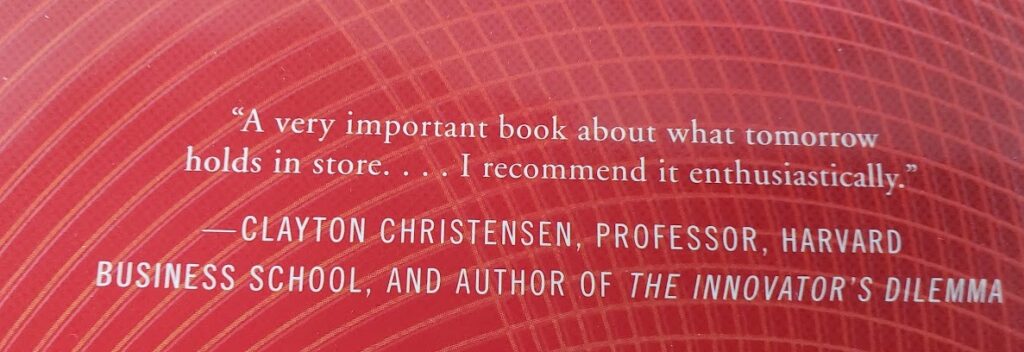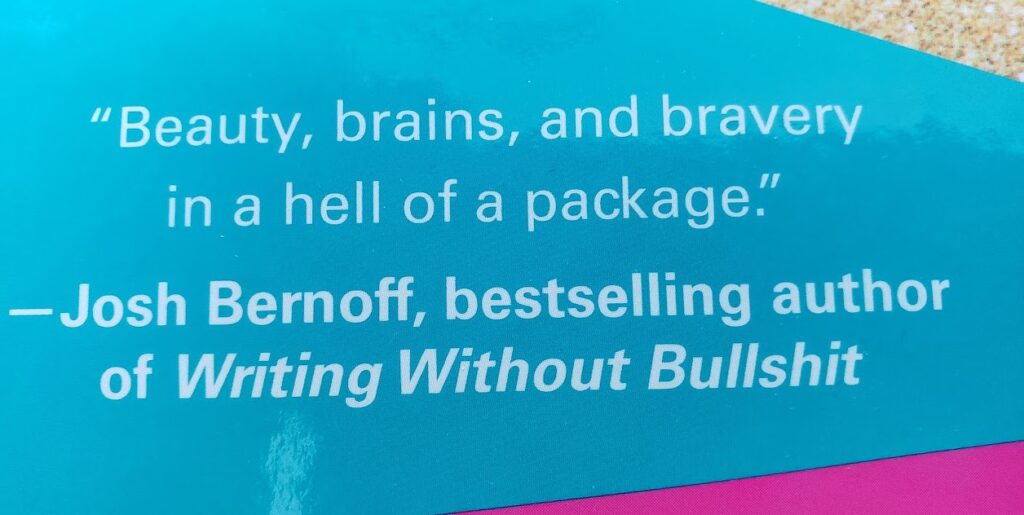Avoiding blurb disasters
Are you ready to ask for blurbs (endorsement quotes) — for your book? Do it right and you’ll maximize your chances of getting the golden endorsement from your most influential connections. Blow it and they’ll resent you for asking. Here are my best tips for a successful blurb campaign — including a few war stories.
(Quick note: confusingly, fiction writers sometimes call the little book description from the back cover a “blurb.” But this post is only about the endorsement quotes, along the lines of “Read this book. You’ll be glad you did!”)
The key principle here is that blurbs are personal. You’re asking a favor. So treat each potential blurber as if they are the most important person on your list, and don’t cut corners — what you see as “efficiency,” your endorser may see as an impolite and impersonal.
The tips . . .
1 Mix up the endorser targets
A nice blurb collection will include some well-known names, some authors, some executives, and maybe a celebrity or two. The bigger the name, the harder it is to get their attention. Conversely, the closer your relationship to the name, the more likely you are to get a positive response. So mix it up, with some close friends and some long shots, some industry folks, some pundits, and some authors. A typical list of targets includes 20 to 30 people, with the expectation of getting back six or eight usable quotes.
2 Write a personal note to each blurb candidate
Did you go to summer camp or business school together? Are they someone you’ve always admired — and if so, why? Why is this book especially relevant for them? Each blurb request should be short and personalized.
A solid professional connection of mine recently send me an email that read like this to secure my endorsement:
Hello Esteemed Potential Book Endorser:
Apologies for the mass and impersonal email. As you no doubt know, my relationship with email is…complicated.
Why I’m Contacting You
Over the last six months, I’ve been conceptualizing, researching, and writing what I hope is an exciting and timely new book. [name of book redacted] will drop in January of 2021. I’m looking for endorsements/book blurbs from smart and accomplished folks. Like it or not, you qualify. Deal with it.
️ . . .
Book premise
[four paragraphs of description]
Accessing the Galley
To download the book’s galley, click [link redacted] . . .
I’m in. What Do I Need to Do?
To submit your endorsement, please click [link redacted] and fill out the Google Form. It’s pretty self-explanatory.
That made me feel less than “esteemed.” I like the guy, but he basically said “You’re on a list with umpteen other people who I treat as all the same and hope they fill out an automated survey so I don’t have to deal with them individually.” So no, I wasn’t “in” — and all it would have taken was a personal note to get me.
But wait, you’re saying. What if you have a hundred of these to send? And there’s your problem. You should send 20 to 30 notes with a decent probability of getting a yes, not 100 with a generic email that the best endorsers will ignore.
3 Be ready to send the manuscript
Don’t attach the manuscript to the email. Instead, offer to send it to the prospect.
You can send the book as a Microsoft Word file, a PDF, or even a link to a Google Doc. But it has to be a nearly complete manuscript.
Another professional acquaintance recently asked me for a blurb. When I said yes, he sent me a link to a Google Drive full of files — basically an “assemble it yourself” version of a book. I was willing to read his book, but figuring out what files go in what order was too much work — and I told him so. (He has promised to get back to me with an actual file soon.)
Some people insist on printed copies. You need to be ready to give them what they ask for. If you have a publisher, they might have “advanced reader copies” available to send out. If not, Staples will print and spiral bind an 8 1/2 x 11 size version of your 200 page book for 20 bucks or so. Yes, it’s expensive. Yes, it’s a pain to mail it. But if Barack Obama says he wants a printout, you really ought to go to the trouble to send it to him.
4 Make the deadline clear — and build in a little wiggle room
Give your potential endorsers at least three weeks to submit a quote. Every book schedule has at least this much time between when the manuscript is nearly done and when the cover text needs to be locked down. Don’t waste that time, use it to give your blurbers time to read and review the book.
If you need the quote by April 9 according to the publisher’s schedule, tell your contacts you need it by April 1. People are often a few days late, and you’ll be better off if you’ve built that into the schedule. (If I’ve asked you for a blurb, pretend you didn’t read this and that the deadline I set is the real deadline.)
And there’s often time at the last minute if the endorser is important enough. On James McQuivey’s book Digital Disruption we got a quote back from Clayton Christensen, the wizard of disruption himself, at the last minute. We managed to get that onto the front cover of the book.

5 Remind them
People forget. People lose track. People have frozen pipes and that mess up their to-do list.
As the deadline approaches, send a reminder. You’ll often shake loose a quote that wouldn’t have happened without that little poke.
6 Don’t promise the back cover
Don’t tell people you want a quote for the back cover of the book — just that you want an endorsement you can use.
Why?
Because there is typically only room for four or five quotes on the back cover. If you get more than that, you’ll have to choose who to bump . . . and if you’ve promised them the back cover, they’ll be unhappy.
What happens if you have more quotes than you can use? They go on the Amazon page as well as on a page at the very front or back of the book. Don’t waste a good quote, even if it doesn’t make it onto the back cover.
7 Get the quote right
When the quote comes in, make sure you use it exactly as the blurber sent it. There is no better way to annoy someone than to misquote someone who has done you the favor of endorsing your book.
I know a woman who, in addition to being a kickass analyst, developed a side career as a plus size model. She received a lot stupid remarks from witless idiots for showing off her curves and handled them all with grace and wit. And then she wrote a book about it.
I once added this comment on one of her Facebook posts:
“Beauty, brains, and bravery is a hell of a package.”
She asked if she could use it as a book endorsement in the future, and I said sure. And she actually did — in fact, she put my endorsement right on the front cover of her book.

But I said is a hell of a package, not in a hell of a package. That makes it sound like I’d loved the book, when I’d never even read it — either that or that I’d call a person a package. Now that misquote is on the front of every copy of her book, which is pretty embarrassing for both of us. (She was dealing with some personal issues at the time of publication and the publisher apparently changed it without checking with her.)
8 Don’t let blurbers lie
Sometimes blurbers get out of hand. But it’s your book. If they’re not telling the truth, that falsehood is now on the back of your book — permanently.
First off, don’t let them make promises you can’t deliver on. If a blurber says “This is the best marketing book you’ll ever read,” that’s hyperbole. But if it’s a book about accounting, it’s worse, it’s a false promise. Make sure the blurb matches the reality.
And don’t perpetuate lies about the blurber either. On one book I edited, the blurber described herself as “international keynote speaker, bestselling author, and CMO.” A little checking revealed that the “bestselling” credential was a stretch (her books had never appeared on any major bestseller list) and that she’d never held the title of CMO of anything. My author client was too afraid to offend her and kept the quote, which made me think a lot less of him.
9 You can negotiate the words . . . but only a little
It’s best to include a quote exactly as submitted. But sometimes that’s a problem, because well-known people aren’t always knowledgeable about what ought to go in a blurb. (You could tell them, but that tends to make people annoyed that you’re lecturing them about the obvious.)
But editing blurbs is a negotiation, so it’s best to approach it gingerly.
If the quote is too long, take out the best part. Then say, “Can we just use this part? We don’t have space for the whole thing.”
If there is a grammatical or factual error, make an edit to fix it. Then send it back and say “My copy editor says it would read better like this. Is that ok with you?” (They’ll probably go along, no one wants to get quoted saying something that violates grammar rules.)
You’ll sometimes be dealing with PR people. In once case, I received a quote from a major tech company CEO that was a bit too long and emphasized the wrong thing. I exchanged two or three respectful emails with his PR person, and we shaped it into something better. It was clear to me that the PR guy had the trust of the CEO, which meant I could be honest about what we needed.
In another instance, we got a quote back from a different big-name tech CEO that was unusable. It didn’t mention the book or the authors — it was all about his brand-name big idea. I tried inserting “As the authors of xxx make clear” into it, but his PR guy said it was non-negotiable. We regrettably had to give up on it, rather than mystifying potential book buyers about what he was saying.
You can also negotiate the blurber’s self-description. That’s what my client with the fake CMO endorser should have done.
10 Be ready to write your dream blurb
Sometimes, amazingly, people say “What do you want me to write?”
You always need answer for this question. And that answer should be tailored to the person who is asking.
So for the pundit, you might suggest “There are dozens of AI books, but this one is the one everybody ought to read first.” Or for the CEO, “My business runs better because we’ve adopted the principles in this book. These authors are the real deal.”
Don’t look a gift blurb in the mouth.
And one more thing . . .
Once they’ve blurbed you, you have a connection.
Don’t be afraid to ask them to submit an Amazon review, to appear on their podcast, to be interviewed on their blog, or to get a tweet or an Instagram shout-out. After all, they already said they liked the book!
And don’t forget to send them a signed copy.
It’s the least you can do.